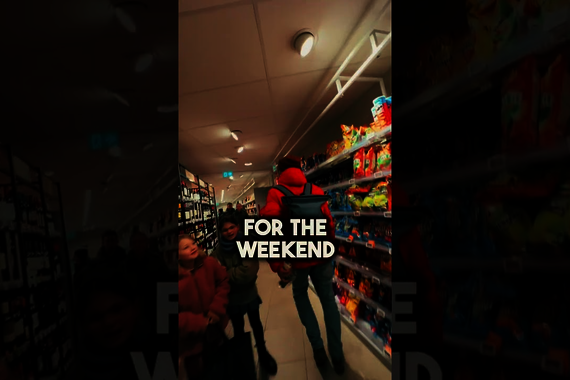
Music as an influencer
From artificial office noises for homeworkers to music as a medicine
Music is everywhere. People listen to it while they exercise, while they commute, or simply while they’re relaxing on their sofa. But music and sound are also used to influence your buying behavior or as a painkiller after surgery. Cursor spoke to Professor Berry Eggen and Assistant Professor Bart Hengeveld about the infinite opportunities offered by music and sound.
“People transmit emotion through speech,” says Professor of Industrial Design Berry Eggen. “We call that prosody.” He’s not referring to the literal meaning of the words, but to everything else around it. “I’m talking about things like variations in pitch (intonation), the duration and rate of speech (rhythm and tempo) and the loudness with which is spoken (volume). If you want to ask a question the pitch goes up at the end of the sentence, and if you’re sad or happy multiple of these speech properties change simultaneously,” he continues. “In a similar manner, music uses those human responses to evoke emotions.” It’s no coincidence, therefore, that the tone and tempo of sad music coincide with the tone and tempo of a sad person’s speech, or that the sound of a siren brings out a certain fear and alertness in us.
Linguistic factoid
Did you know that the word ‘siren’ – like firetrucks and ambulances have – is derived from the eponymous mythical creatures? According to Greek mythology, sirens were demigoddesses, with bodies like birds and heads like women, who lived on islands in the Mediterranean Sea. With their singing they lured passing ships and made them crash onto the rocks. As a result, their singing was associated with danger. And this is how modern-day sirens, whose function is to alert people to the presence of danger, got this name.
Strike a chord
This knowledge is used very deliberately in various industries. Take film, for example. A horror movie tends to be a lot less scary if you turn off the sound. “Music determines the atmosphere of a scene,” says Eggen.
The advertising industry also makes smart use of this. “The goal of an ad is to persuade someone who doesn’t know the product yet. Music and sound are crucial in this respect,” he continues. During the ‘Sound Design’ course, which Eggen taught, students were tasked with conveying the ‘experience’ of a product. "A sound sketch is what we call that. It is almost like an ad,” he says. "In those sound sketch videos, music or musical background sounds are used to create an atmosphere; just like in film. Subconsciously, those sounds influence how that product might be experienced."
And even – or should we say especially – stores and supermarkets seem to deliberately try to strike a chord with their customers. When at Albert Heijn, make an effort to listen to the array of sounds you hear: products getting scanned, bonus card getting scanned, products getting removed from the list. It’s no coincidence that the sounds that correspond to buying more (such as scanning, bonus card, paying) are happy ones, whereas the sounds that correspond to buying less (such as removing a product) are very sad.
The text continues below this video.
Music as a medicine
Music isn’t only used commercially, but also to non-profit ends, for example in the medical sector. ‘Music therapy’ has become a familiar concept for many conditions. Among other things, music is used to help severely autistic children make contact and develop social skills, to enable Parkinson’s patients with mobility problems to dance, and to cheer up people with dementia.
The latter is also being researched at TU/e. According to Alzheimer Nederland, about 85% percent of people with dementia have behavioral problems in the course of the disease. “It’s been proven that music has an enormous impact on people with dementia,” Eggen says. “It evokes memories right away and puts people at ease, making them behave very differently.” Several groups at the Expertise Centre for Dementia and Technology (ECDT) are currently following up on this. “In his PhD research, Industrial Design employee Maarten Houben looked into whether this effect occurs with everyday sounds as well, and it does,” Eggen says. In this case, music is substituted by sounds that have a personal meaning to the patient concerned. “With someone who used to be a train conductor certain back train noises appear to evoke strong memories and interaction with their environment, for instance.”
There’s already a lot of evidence showing that music can alleviate fear and pain
Music has also been given an important role in hospitals, particularly in the operating theater. Studium Generale recently featured a lecture with Markus Klimek, anesthesiologist at Erasmus University Medical Center and board member of the Muziek als Medicijn project group. The group researches the use of music as a painkiller after surgery. “There’s already a lot of evidence showing that music can alleviate fear and pain, which allows patients to use less pain medication, stay in the hospital a shorter amount of time and recover faster following surgery,” Klimek said during his lecture.
Artificial office noises for at home
Perhaps dementia and surgery aren’t the most relatable topics for you, but putting on earphones and listening to music in order to focus is something most people do recognize. Some people like to study to pop songs, while others perform optimally while listening to piano music. Even if you’re not using a Spotify playlist, you’re subconsciously listening to a composition of everyday ambient sounds, which also affect your focus.
People work from home more and more, which has all kinds of advantages but also some disadvantages
Bart Hengeveld, assistant professor of Industrial Design and a bass player, is currently supervising research into this subject by Industrial Design researcher Randi Nuij. “People work from home more and more, which has all kinds of advantages but also some disadvantages,” says Hengeveld. “One of those disadvantages is: my home looks, feels and sounds like my home. So my surroundings aren’t at all conducive to going into work mode, so to speak.” He also says the lack of colleagues has a noticeable effect. "I don't have any sense of the 'rhythm' of my colleagues in Atlas, so you experience a certain distance."
This inspired Nuij to develop a work soundscape for at home. Her sound generators produce a combination of human murmurs, sounds from nature or abstract noises. “These include the crackles and pops buildings tend to produce,” Hengeveld explains. These sounds depend on the activity of connected colleagues. “Those sounds are triggered by certain activities. I’m at home now, but I usually work in Atlas. If it’s very busy there, which means there’s a lot of sound, Randi’s program translates this into more active noises in my home environment. Without it literally being the same noises as in Atlas.” According to Hengeveld, this is to ensure that people feel more connected to their remote colleagues (and vice versa), and that it can contribute to your focus and productivity in your remote workplace.
If all of the devices are calling for attention by blasting their alarms, the purpose served by those sounds goes out the window
Overstimulation
It’s all well and good that audio is more and more able to help us, but what if everything produces sound at the same time? “Take an intensive care environment, which is a place with a lot of sound,” Eggen says. “The sound has been designed per device, but an actual emergency will result in sudden chaos. If all of the devices are calling for attention by blasting their alarms, the purpose served by those sounds goes out the window.” Self-checkouts – with their constant bleeps and beeps – are another good example of this. “One of my graduate students used to work at Albert Heijn. She told me that after a day of work she’d be entirely overstimulated sound-wise, because if there are a dozen or so people at the self-checkouts you hear everything all at once.”
Looking for alternatives for these kinds of ‘force-fit soundscapes’, Eggen and Hengeveld jointly teach the course ‘The Sound of Smart Things’. “If we listen to the designed sounds, it’s clear they weren’t necessarily designed to be part of a greater whole, a kind of everyday soundscape,” says Hengeveld. “Every bleep that comes in adds up to a considerable cacophony.” The course uses, amongst other things, musical principles to investigate how one can make a sonorous and functioning composition out of all the artificial sounds and notifications around us, similar to how musicians operate. “This is how we try to create a coherent whole out of all of those separate sounds”, he concludes. “Not by replacing the sounds around us with bits of music because that will be terrible, but rather by taking the ensemble of sounds around us and interpreting them in a more musical way.”




Discussion